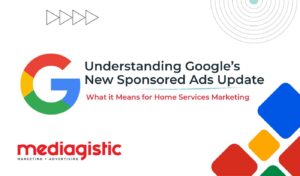
People Still Consume Ad-Supported Media Even When Non-Ad Supported Options Are Available

The modern consumer has a seemingly unlimited number of media options these days. Even with the advent of ad-free subscription models and ad-blocking technologies, research from Nielsen shows that overall consumer viewing behavior has remained relatively consistent. Ad-supported media is still where consumers are spending most of their time.
Understanding the Modern Media Landscape
During the last few decades, the media landscape has diversified dramatically. While television adoption has remained high, in the upper 90s, other devices have gradually made their way into the home as well. Smartphone adoption is only a few percentage points behind TV, with 89 percent of US homes having these devices. PC ownership with an internet connection increased from 71 percent in 2007 to 81 percent in 2017. While just 19 percent of US homes had tablets in 2012, an impressive 64 percent had them in 2017.
The increase in tablet, smartphone, and computer usage hasn’t put a dent in media consumption from ad-supported sources, however. This is due, in large part, to what is known as the second-screen experience; people use their mobile devices to supplement their media-consumption experience rather than to supplant it. Plus overall time watching media has increased as well. Between 2002 and 2017, consumers increased their media time by over 25 hours. During this time, the ratio of ad-supported media to non-ad supported media stayed relatively consistent.
Ad-Supported Media Reigns Supreme
Ad-supported media doesn’t just outdo non-ad supported media, it crushes it. Nielsen reports that, in 2017, ad-supported content platforms accounted for 86 percent of adult media consumption:
”According to Nielsen data, the share of time spent with ad-supported content on platforms (such as TV, radio, smartphones, video games and tablets) for adults in 2017 was 86% — a number that’s remained relatively flat over the past decade. In 2002, when avenues of consumption were mainly via television and radio, ad-supported content accounted for an 89% share of consumers’ time spent.”
From a daily active user standpoint, the numbers also are strong. According to PQ Media’s Global Consumer Media Usage & Exposure Forecast 2017-21, ad-supported media constitutes 66.5 percent of the daily average 7.3 hours that consumers currently spend with media.
Although the report does estimate that this number will drop by 3.1 percent by 2021, the takeaway is that ad-supported media still will represent the lion’s share of consumer viewing habits for the foreseeable future. This ultimately means advertisers still have a wealth of opportunities for connecting with their audiences via these ad channels.
Broadcast Radio: Still the “Comparable King”
Of all the ad-supported media out there, broadcast radio remains a top choice for Americans. Nielsen reports that a massive 93 percent of Americans listen to AM/FM radio each week. This is more than watches television, uses smartphones, or uses computers. AM/FM radio also outperforms streaming audio. When comparing total time spent, radio outdoes audio at a rate of 14:1.
While 216.5 million Americans watch TV each week and 204 million use an app or the internet on a smartphone, 228.5 million listen to radio. These listeners account for more than 202 billion minutes of radio time each week. Rather than drawing audiences away from radio, advancements in technology simply serve to bring more listeners in by making popular radio stations more readily accessible on various devices.
For these reasons and more, we often recommend radio as the most effective media due to its mass reach, cost effectiveness, frequency building and time allowed to deliver a message.
Custom Media Recommendations for Your Business & Market
At the end of the day, these studies help to confirm that, even as the media landscape continues to see fragmentation, the traditional mass media options are still relevant. Ultimately, we have only seen a minimal 4% decrease in time spent viewing/consuming in more than a decade. Although they’re still projected to fall a little in the coming years, there’s still a very long way to go before ad-supported media stops being the primary means of exposure for advertisers.
Wondering how you can capitalize on these trends and most efficiently reach potential customers with your advertising dollars? The Mediagistic media planning and buying team always evaluates all potential options and avails only the media that will get the best results for your business. Contact us today so we can get started working on a custom recommendation for your business and market.
Michelle Caston is a Key Account Media Manager at Mediagistic. Among her many other responsibilities, she specializes in recommending and executing local media campaigns to drive traffic, sales, and achieve other branding goals. Connect with her on Linkedin.
Image via Pixabay by Fotocitizen
You May Also Like

Google’s “Have AI Get Prices” Feature: Rewriting Local Search for HVAC & Home Services
December 15, 2025In recent months, Google has quietly rolled out a major update to local search with its new “Have AI Get Prices” functionality,… Continue Reading Google’s “Have AI Get Prices” Feature: Rewriting Local Search for HVAC & Home Services…

Mediagistic Announces Strategic Partnership with EGIA to Deliver Enhanced Marketing Solutions for Home Services Contractors
November 10, 2025Tampa, FL – Mediagistic, a full-service marketing and advertising agency specializing in contractors and service-based businesses, today announced a strategic partnership with… Continue Reading Mediagistic Announces Strategic Partnership with EGIA to Deliver Enhanced Marketing Solutions for Home Services Contractors…

Understanding Google’s Sponsored Results Update: What it Means for Home Services Marketing
October 20, 2025Google is once again reshaping how paid ads appear in search results, and this change (called the Google Sponsored Results Update) could… Continue Reading Understanding Google’s Sponsored Results Update: What it Means for Home Services Marketing…